People often think that making tea is very complicated, so it also forms two options: one is superficial because they do not like to learn. The second is to fall into unrealistic or magical ways. We‘ll show you 3 simple points about how to make tea with a teapot.
Everyone knows the basic steps of making tea, dry tea is boiled in warm water and poured into a cup to enjoy. Making tea is not that complicated to the point of being an expert, but it is not as simple as simply steeping the tea in a kettle.
With this article you will find:
- Some important things in making tea
- What kind of teapot should you choose to make tea?
- Steps to prepare tea standard
- Tips you need to make better tea
- What should you pay attention to in order not to affect the taste of the tea when brewing?
- Circumstances should not use tea
- After drinking tea, don’t forget to clean your teapot
Some important things in making tea
Have you at any point contemplated what your tea comprises? There are tea leaves yet they establish just 1% of your cuppa, the rest 99% is water! So certainly water, as a significant fixing, impacts the fragrance and taste of tea. Quite possibly the main factor that goes into making the ideal cup of tea is the nature of your tea leaves.
Aside from that, the temperature of the mix and the water utilized ought to likewise be thought of. Here are the reasons why the water utilized and the temperature at which your tea is blended can influence the flavor of tea:
Water quality influences the flavor of tea
The greater part of you realize that delicate water is more appropriate than hard water, yet what is the purpose for it? Hard water contains minerals like calcium and magnesium which confer a severe flavor and decrease the normal taste of tea.
A high mineral substance will emit a weak tone and level flavor to the tea. Very few realize that the minerals present in water can respond with cell reinforcements to lessen the healthy benefit of the tea. Then again, delicate water contains a lower level of minor elements which has little impact on the flavor of the tea. Consequently, delicate water is better for blending your tea.
The nature of water relies upon different factors like mineral substance, hardness, pH level, and so forth As talked about above, high mineral substance detrimentally affects the flavor of the tea. Continuously look out for obvious signals like the development of rubbish, darkness, and so on.
They are demonstrative of unwanted mineral responses and low-quality water. Even though pH is anything but the main consideration, an impartial pH for example 7 is viewed as reasonable. A high pH (more noteworthy than 7) will prompt dim tea imbuement and diminish the movement of catechins. Additionally, a low pH (lower than 7) will support lighter imbuements.
Additionally, ensure that you just utilize new water for tea arrangement. This is because a high measure of oxygen in water (H2O) adds to a completely seasoned tea with a scramble of newness. Accordingly, never let water remain in the pot/pan for long as it decreases the flavor of the tea.
Water temperature impacts the flavor of tea
The ideal water temperature for tea seems, by all accounts, to be a questionable point. While a delicate bubble will not permit tea leaves to deliver flavor, a powerful bubble can make the tea build up a dull taste. It is ideal to bubble barely enough to carry sufficient oxygen to the water. Follow these convenient tips that can be utilized to make the most out of your everyday cup of tea.
- White tea: As perhaps the most sensitive teas, white tea has extremely low caffeine content and the most significant levels of cell reinforcements. A helpless arrangement strategy can demolish the unobtrusive kind of white tea. As a thumb rule, dodge the utilization of water above bubbling temperature which may singe the tea. Henceforth, white tea should be fermented cautiously at around 160ºF.
- Green tea: The best temperature for blending green tea relies upon the assortment utilized. Inferior quality green teas ought to be blended at a higher temperature (170ºF to 195ºF) while great green tea tastes best with cooler water (158ºF to 176ºF). The correct temperature of the water is imperative to appreciate the heavenly flavor and medical advantages of green tea!
- Oolong tea: The semi-matured oolong tea is known for its hearty taste and strong fragrance. In a perfect world, the more oxidized the oolong tea is, the higher the water temperature ought to be. Henceforth, the legitimate water temperature for fermenting oolong tea lies between 190ºF to 200ºF.
- Dark tea: Black tea is perhaps the most favored drinks devoured by two-third of the total populace. It is oxidized to draw out a solid, full-bodied flavor and remedial properties. The vast majority concur that dark tea ought to be prepared with water somewhere in the range of 190ºF and 200ºF.
- Homegrown tea: Herbal tea (or tisane) is set up from the various pieces of plants and bushes except for Camellia Sinensis for example genuine tea. Tisanes are normally without caffeine and can be appreciated hot or cold.
They have a fragile flavor going from citrusy, botanical, minty, or lush relying on the homegrown implantations utilized. For the most part, water at a full bubble (212ºF) functions admirably for preparing natural tea.
The information on the impact of water on the tea taste can assist you with accomplishing quality tea each time. There is an acclaimed Chinese saying, “Water is the mother of tea”. Presently you at long last figured out how! You should remember that the fine nature of tea and water makes for an acceptable blend.
Notwithstanding, if tea surrenders are not to standard, water alone can’t save your tea! Then again, real teas would not taste acceptable with each sort of drinking water. Tea can arrive at its most extreme taste potential when coordinated with quality water.
In this way, looking for the greatest tea alone can’t guarantee you a decent cup of tea. To appreciate the most elevated taste capability of tea, utilize great quality water also.
What Kind Of Teapot Should You Choose To Make Tea?
The teapot can be separated by various qualities – relying upon the country, the material they are produced using, the time they have a place, and so on material and nation of starting point are the two most significant things you need to see while picking your teapot for how to make tea in a teapot best!
Glass
A decent glass teapot is consistently an incredible extra to your tea kettle assortment. They are extraordinary for preparing practically any sort of tea and crucial for blending blossoming or blooming teas.
A glass tea kettle will permit you to appreciate the magnificence of opening tea leaves. Glass tea kettles can come in various shapes and sizes. They can have glass or metal channels, or no channel by any stretch of the imagination. The best teas to brew in a glass tea kettle are ball molded oolongs like Ti Kwan Yin, sprouting tea, botanical teas, Dragon Well, and numerous other green teas.
Cast iron
The best illustration of a cast iron tea kettle is a Japanese-style teapot called testubin. Nonetheless, not all tetsubins are tea kettles. Truth be told, customary testubins were utilized for bubbling water, since they would change the flavor of water and improve the kind of tea. Today, both cast iron tea kettles and cast iron pots are called testubin.
In any case, cast iron tea kettles have a polish covering and are utilized for fermenting tea, not for bubbling water, and all the time they may fill improving needs better.
Clay
There is a wide range of pottery tea kettles – permeable earthenware production, coated ceramics, stoneware, porcelain, and so forth The most renowned permeable unglazed ceramics tea kettles come from Yixing.
They are made of purple dirt (zisha) and are incredible for making oolong crude Pu’erh teas. Throughout the time, they may get a slender layer of within covering from blending tea. That is the reason they ought to consistently be utilized for one kind of tea as it were.
The other sort of earthenware, stoneware, is non-permeable and might be utilized for making various kinds of tea. Porcelain, likewise a sort of artistic, is exceptionally flimsy, complex, and ought to be utilized with incredible consideration.
Treated steel
The greatest benefit of treated steel tea kettles might be the warmth maintenance. This implies your tea will remain hot for more than in a glass tea kettle. It’s additionally the toughest material, as it will not part from falls or break from bubbling water.
the kind of tea kettle you use influences taste?
Indeed, the kind of tea kettle you use can influence the flavor of tea as well. Glass pots and non-permeable pottery are a portion of the kinds improbable to impact the taste. Cast iron, treated steel, and permeable pottery may impact the desire for various reasons. Initially, consistently purchase top-notch teaware that is protected to utilize. Materials utilized for making extremely modest tea kettles may not generally be protected or they may get demolished throughout the time.
Then, metal teapots may rust, if not produced using treated steel. The permeable earthenware tea kettle is the best tea kettle you could purchase for your tea – however just if you use it for one kind in particular. For instance, utilizing a similar permeable artistic tea kettle for making pu’erh dim tea and silver needle white tea is never a smart thought, since white tea is too sensitive to even consider having a similar tea kettle with tea as solid and dim as pu’erh.
Standard Steps To Make Tea With A Teapot
Here are 7 steps for how to make tea with a teapot. All you need to prepare:
- Tea
- Teapot
1. Boil water
Using the water you have is filtered bottled water, not mineral water or tap water.
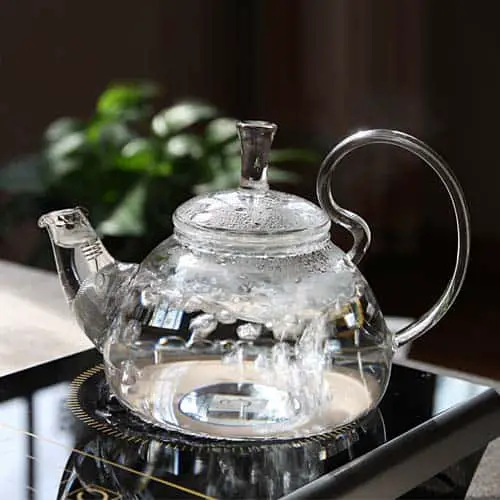
2.Heat your teapot
Pouring out the water the teapot and cups.
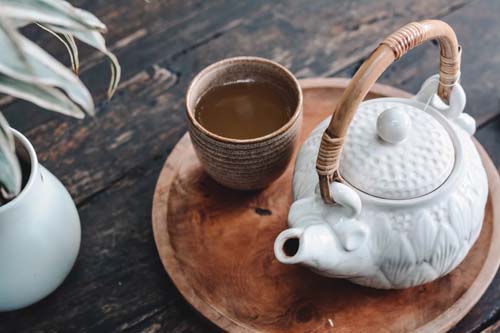
3.Select the amount of tea
Select enough tea into the teapot up to some kind of tea.
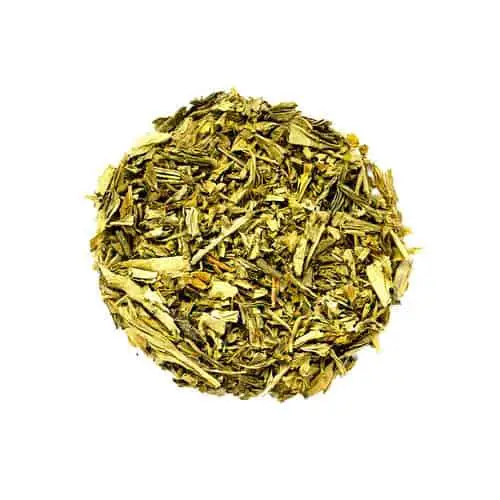
4.Rinse the tea
Using hot water used in this step is not boiling.
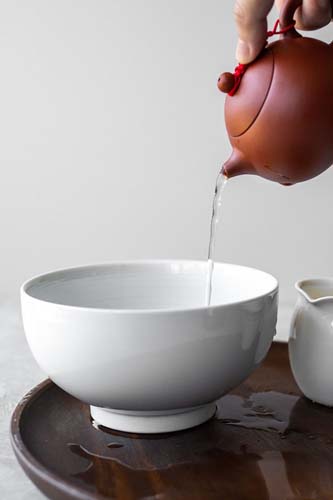
5.Seat tea
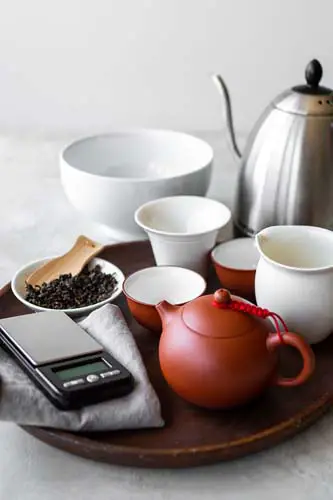
6.Pour the tea
After 10-40 seconds, pour all the water from the teapot into the pot. Then from the specialist poured out teacups. A tea specialist is very important at this time.
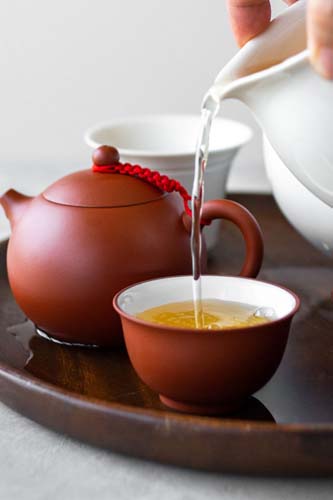
7. Add more tea water next time
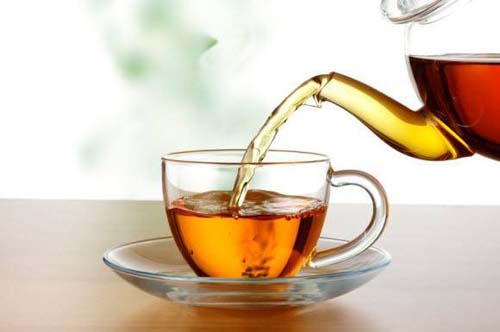
If the first tea is too light or too dark, adjust the time for the next break.
The tea is delicious and well brewed, you can repeat 5-8 sets of braiding tea before the taste becomes too light.
Tips You Need To Make Better Tea
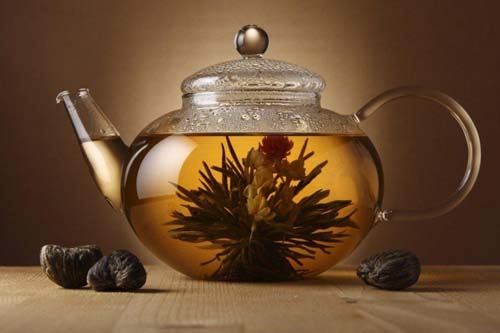
Some useful tips with how to make tea with a teapot:
- Starting with small pots and thin walls, everything will be much easier. If you are just starting, choose a glass pot or a ceramic pot to make your tea. These two teapots will faithfully reflect the taste of the tea, and leave no smell, so you can make a wide variety of teas.
- Tap water cannot ferry tea. The simplest is to use bottled water (but not mineral water).
- No thermometer is needed to measure temperature. You can reduce the water temperature by boiling and letting it cool gradually. The water boiled in the super speed pot, after 5 minutes will decrease to about 83 ° C
- Tea fibers are small, thin, and spongy with low temperatures. Large, strong tea fiber with high temperature. Green tea brews at a lower temperature. Oolong and black teas need a higher temperature.
- If you want a stronger flavor, increase the amount of tea, not increase the temperature or soak for longer.
- There is not a completely accurate answer for the water temperature, brewing time, and quantity of tea for each type of tea. Try decreasing those 3 factors to discover your answer
What Should You Pay Attention To In Order Not To Affect The Taste Of The Tea When Brewing?
Tea is a popular drink by many people. It not only appears in everyday life but is also an indispensable part of the holidays … However, the way to make delicious tea to make the teapot taste perfect, rich in nutrients, not everyone knows. Below are general information and notes when brewing to own a delicious, attractive teapot.
Tea is made from the leaves and young shoots (buds) of a tea tree or a tea tree with the scientific name Camellia sinensis. The tea group trees originate mainly from East Asia, South Asia, and Southeast Asia. However, thanks to its taste and uses, today tea is grown in popularity in many parts of the world, in tropical and subtropical regions.
In terms of morphological characteristics, the tea tree is a perennial green tree that grows in bushes or individual trees. They are often cut short (except for some types such as the ancient snow shan tea of our country) to stimulate young shoots and facilitate collection.
The young leaves and buds of the tea plant have a unique taste and many healthy nutrients. Camellia is yellowish-white, with a diameter ranging from 2.5 – 4 cm, with 7-8 petals. Soft white seeds, hard black when old, can be pressed to get oil.
Currently, the world has recorded many different varieties of tea plants. However, tea drinkers often divide tea into 6 main categories, including white tea, green tea, yellow tea, oolong tea, black tea, and universal tea atrium. The names of the teas partly reflect the tea-making process, the varying degrees of oxidation involved in the processing, and the type of nutrients in the finished tea.
In addition to the 6 teas that are made from the above tea tree, all other types such as herbal tea, fruit tea are blended tea. They are also used for drinking tea, but the ingredients, flavors, and effects differ.
Do not pour boiling water into the teapot
Many people believe that pouring boiling water into tea will shorten the incubation time so that nutrients are absorbed into the water and have a better taste. However, if the tea is made from the young buds of the tea plant, boiling water can burn the tea wings (with mixed teas, boiling water, or old hot water helps nutrients absorb quickly and ensure flavors of all ingredients). The best water temperatures for making good tea are:
- White tea: 65 – 75 ° C
- Green tea: 75 – 85 ° C
- Black tea: 85 – 95 ° C
- Tea brew: 85 – 100 ° C
To determine the exact water temperature, you can use a thermometer commonly used in the cooking process. If you don’t have a thermometer, you can determine the temperature visually or test it manually.
For example, with white tea, if you heat it with an electric kettle when you see the first smoke of steam coming out of the kettle when the kettle is vibrating, the water will reach about 65 – 75 ° C and can be used. As for black tea, you need to wait until the kettle vibrates and bubbles to make a delicious tea.
Use fresh water to boil it to make a delicious tea
If your area is in hard water (which is natural water containing more than eight milliequivalents of cation magnesium (Mg2 +) and calcium (Ca2 +) per liter), there will be residue at the top of your teapot. If your family has a filter, you should filter the water before boiling it to make tea. If not filtered, you can use the freshly boiled water to make tea.
Because every time you reheat the water, you are stopping the minerals in the water. When cooled, these minerals will condense on the surface of the water, affecting the flavor and quality of the teapot.
Therefore, if you only use a certain amount of water in the kettle to make tea, cook the right amount of water each time. This will both help remove residue in the teapot to ensure you make the tea well, right.
Do not heat the teapot
In tea culture, many men who wear guests often advise users to rinse the kettle to heat the teapot. The purpose of this is so that when pouring water (at the right temperature for the tea to be brewed), the water temperature will not be much reduced, ensuring a delicious, tasty, long-hot tea. However, this method is only true for teapots made from stone, thick jade.
Nowadays, the types of teapots on the market are mostly porcelain and thin glass, the kettle has little effect on the temperature of the tea-making water, so users do not need to rinse the kettle with boiling water separately. Also, after the teapot rinsing step, when you add the tea leaves, you still need to use warm water to remove dirt, so if the teapot is thin, it will be completely healed in this step.
Don’t put too much tea in the teapot
If you want to make good tea, you should estimate the appropriate amount of tea. This will typically be about 1 teaspoon of tea for each cup of tea made. Adding too much tea to the kettle will make the tea too thick, causing insomnia, irritability, losing its natural flavor, and also wasting tea leaves.
However, if used too little, the tea is pale, less attractive. A standard tea-making kit nowadays typically uses about 5 teaspoons of tea leaves with small winged tea like hookah snow shan tea. For larger buds, 6 teaspoons of dry tea can be used.
How to put milk in tea
Many people like to add milk to tea for flavor enhancement. However, adding the wrong way can ruin the teapot. For good tea makers, when brewing the whole teapot, they will put the milk in the cup first. When the tea is ready, pour the tea into the milk cup to warm the milk. This approach not only helps to break down the proteins in the milk but also prevents the tea from getting sludge.
With tea bags, users should add milk later. That is, put the teabag in a cup of boiling water for about 3 minutes and then take out the tea bag, add milk. If you put milk right on a tea bag when brewing, it will cool the water, fat in the milk will cling to the nutrients in the tea that can not melt, affecting the taste and quality of the tea.
Green tea also contains caffeine
Many people assume that green tea does not contain caffeine. However, this concept is completely wrong. Tea always contains a certain amount of caffeine. In particular, all teas produced from young tea buds contain caffeine. At the same weight, tea contains more caffeine than coffee.
However, you usually use more coffee to brew, so a cup of tea may contain less caffeine (for example, a cup of black tea contains only 40-70mg while a cup of coffee contains 100-200mg of caffeine). The amount of caffeine in tea also brings many uses for health instead of as harmful as the caffeine of coffee.
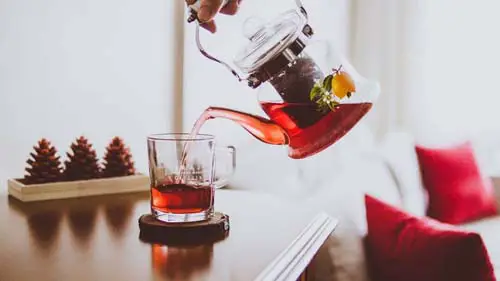
Circumstances Should Not Use Tea
Below are some options that should not use tea:
Do not drink tea on an empty stomach
- When taken on an empty stomach, the tea stimulates the stomach and reduces appetite, making it harder for the body to absorb food.
- Also, drinking tea on an empty stomach will cause a hangover feeling in the body and make us dizzy and nauseous.
Do not use tea to take medicine
- When using tea to drink medicine, the nutrients contained in the tea will react with the medicine and decrease the effectiveness of the medicine. This makes the disease take longer to heal.
- For the best use of the drug, you should drink it with pure water.
Do not leave the tea overnight
- When left to the tea overnight, vitamins B and C in the tea will be decomposed and the tea water will dull.
- Make tea in the morning and use it up throughout the day. This will help us to keep all of the nutrients in the tea and absorb them to the fullest.
Pregnant women should limit drinking a lot of tea
- Pregnant women who drink too much tea can lead to anemia and affect fetal development.
- Besides, the tea will stimulate the nervous system, making it difficult for pregnant women to sleep and their heart beats faster.
- Pregnant mothers, please limit drinking tea to protect your health and the fetus!
After Drinking Tea, Don’t Forget To Clean Your Teapot
Preferably, we’d all beginning by following the customary hand-washing headings after each time we utilize our teapots. However, when rust and mineral stores are assuming control over, it’s an ideal opportunity to attempt the profound cleaning strategies underneath, including the lemon and preparing pop. Reward: it doesn’t need any brutal synthetic compounds.
- For regular cleaning: Wash the teapot with a gentle dishwashing cleanser and high temp water, at that point flush completely, and dry to keep rust from framing. On the off chance that you have a teapot with a polish completion, try not to utilize steel fleece or any grating scrubber that could start to expose what’s underneath.
- For descaling: If mineral stores have developed in your pot, add 1/4 cup white vinegar and 2 cups water to the pot, at that point stew for 20 minutes.
- For a profound clean: If you’re managing both mineral stores and rust stains, consolidate 2 tablespoons preparing pop, 2 tablespoons lemon squeeze, and water in the pot. Bubble for 30 minutes, ensuring that there’s consistent water in the pot. Let cool, at that point wash altogether and dry.
- To eliminate oil outwardly of the pot: If the outside of your teapot is a veneer or treated steel, combine as one heating pop and white vinegar to frame a glue, at that point use it to clean away oil and grime. To clean a copper teapot, cut a lemon down the middle, dunk it in salt, at that point use it to rub the outside of the pot. Flush completely and dry.
Tip: To keep rust and mineral stores from framing in any case, don’t allow water to sit in the pot for the time being.
Q&A
How is good tea?
You can base it on the taste and aroma of the tea. First of all, about the taste of tea, each person’s taste is different, for each person, good tea will be a tea that tastes suitable to their senses. Normally, men will prefer tea with a strong acrid taste, while women tend to prefer tea with a milder flavor. However, if it is a really delicious tea, the acidity of the tea will not fade quickly, the acidity of the second and third brew will not be much different from the first.
How good is the tea color?
Tea water must be green, clear, free from cloudiness and discoloration for a long time. Tea must be bright, not dull, and must be comparable and yellow like honey. If the tea water meets the criteria like that and after 2-3 times brewing still retains this criterion, it is definitely a good tea standard.
Conclusion
Hopefully, with my article, you have useful information on how to make tea with a teapot and notes when making tea. You can also refer more to my useful articles with quality teapot here!

